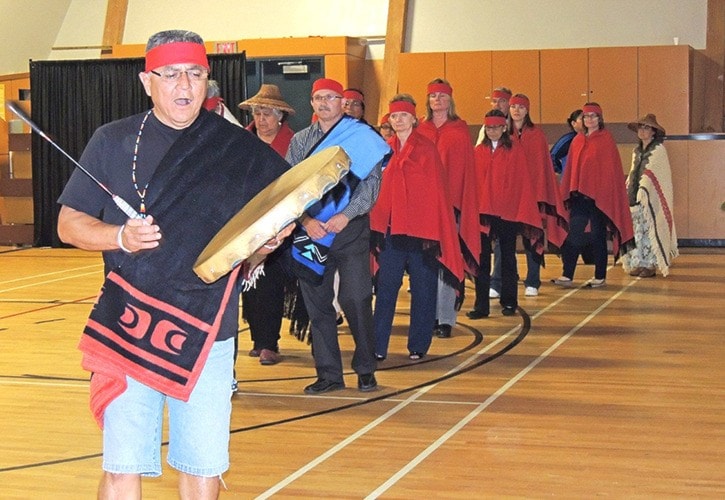There are barriers to education that are unique to First Nation students. But barriers aren't impossible to overcome, and educators within the Seabird Island Band and the Fraser Cascade School District are celebrating local efforts to help students achieve their best.
For the past two years, an education committee has been working on rewriting a Local Education Agreement, a guiding document that outlines the support plan for First Nations students.
And on Monday, they gathered in a special signing ceremony that brought the the band and the district closer together.
Chief Clem Seymour said the act of coming together in the ceremony, and the procession through the school's gymnasium, was more symbolic than any signature on a piece of paper. Nevertheless, he said, the agreement is a sign that everyone is moving forward for the good of the First Nations youth, and the future.
"When we put our culture and our traditions in front of us, we are opening the door to let the world to come and walk with us," Seymour said.
"This agreement takes our relationship to a new level, a much higher level, it is about high expectations, meaningful ongoing collaboration and an increased level of effective communication," said Trustee Ron Johnstone. "This agreement ensures that Seabird students will feel a sense of belonging and relevance when attending our schools. I am confident that by working together we can ensure that overall student success and high levels of achievement are not only possible but inevitable."
One of the biggest barriers to success in school for First Nation students is getting in the doors in the first place. Infrequent attendance can greatly inhibit education, but the numbers are already shifting.
For example, the Fraser Cascade, which has a high number of First Nation students, is achieving a six-year completion rate of 65 per cent. The provincial average is 57 per cent.
Getting more students into the classroom , right through to graduation, will increase those numbers even more, said Superintendent Karen Nelson.
The new LEA addresses ways that schools can reach out into the community, through parents, to increase the chances of success in the classroom.
It also has an annual review built in, so that the LEA can be more effective.
"It's got to be kept alive. There's no sense in having it sitting on the shelf," Tyrone McNeil, a driving force behind the LEA.
Many of the points made in the document are things that were already being done in Seabird, McNeil said. But there is a long way to go, he admits.
While some barriers are within the home, others are within the education system itself, he added.
"A lot of teachers have varying expectations," he said. "As long as he has brown skin and a deep voice, they think it's enough that he showed up."
That's not good enough, he said. Teachers need to push all students to achieve their very best.
"So many of our kids just float through," he said. "If given the chance, they can soar."
The LEA is already being eyed by other communities as the one to follow, McNeil added.
news@ahobserver.com
